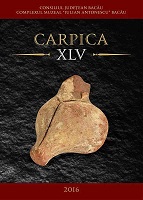Capele subterane din salinele alese din Polonia (Wieliczka, Bochnia) şi România (Cacica, Târgu Ocna)
Underground Chapels from Chosen Mines in Poland (Wieliczka, Bochnia) and Romania (Cacica, Targu Ocna)
Author(s): Marcin MarynowskiSubject(s): Christian Theology and Religion, Economic history, Modern Age, History of Religion
Published by: Complexul Muzeal “Iulian Antonescu” Bacău
Keywords: the salt mine; the salt mines; underground chapels; miners; religiousness; tradition; Poland; Romania;
Summary/Abstract: The theme of the work is underground chapels with selected and well-known by the author from Polish and Romanian salt mines. The underground chapels created by miners they say about their particular religiosity. Secondly about their memory of the many accidents at work could fill them with fear. For us today are antique works of art. In the Wieliczka Salt Mine there are very much underground chapels that existed here since the sixteenth century. Also in the Salt Mine in Bochnia over the centuries, there a lot of underground chapels. Documented sources define that chapels in a salt mine in already in the seventeenth century. Until 1772, in this mine were about 16 chapels. At present, the mine has four chapels. The salt mine in the Romanian Cacica has two underground chapels. One of them is constructed by Polish miners. It is large in size and has beautiful ornaments, including elements that are similar to design the most beautiful chapel of the salt mine in Wieliczka. In the Salina Targu Ocna in 1992 was done the Orthodox underground church, dedicated to St. Barbara. The underground chapels in salt mines functioned not only as a place of prayer, and on the other side of the chapel is not only a space or room. While salt sculptures graced become an area of spirituality. They were accompanied by music forever, so in this text are also described orchestras existing mining in salt mines.
Journal: Carpica
- Issue Year: 2016
- Issue No: XLV
- Page Range: 141-154
- Page Count: 14
- Language: Romanian

